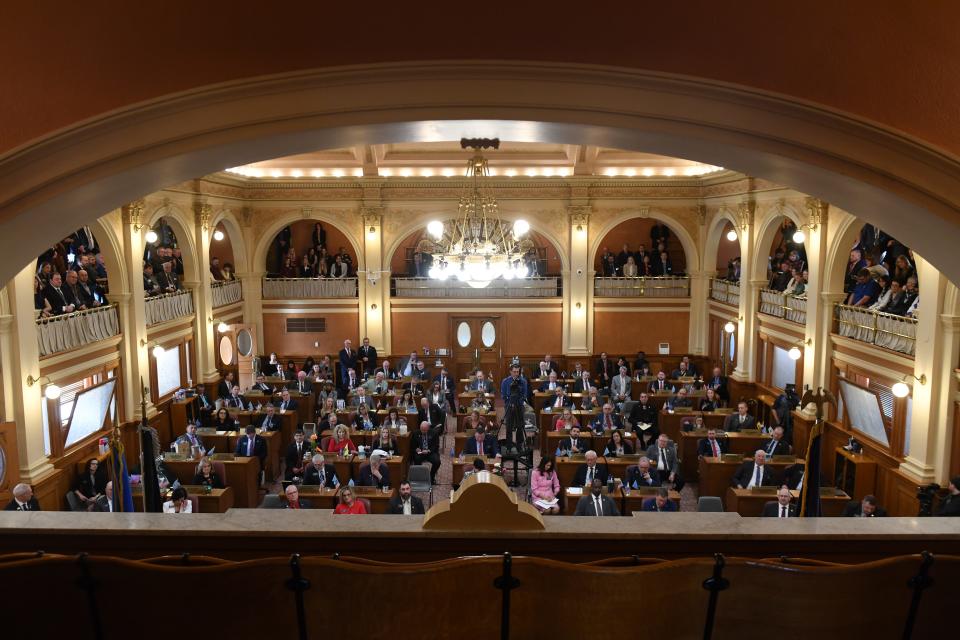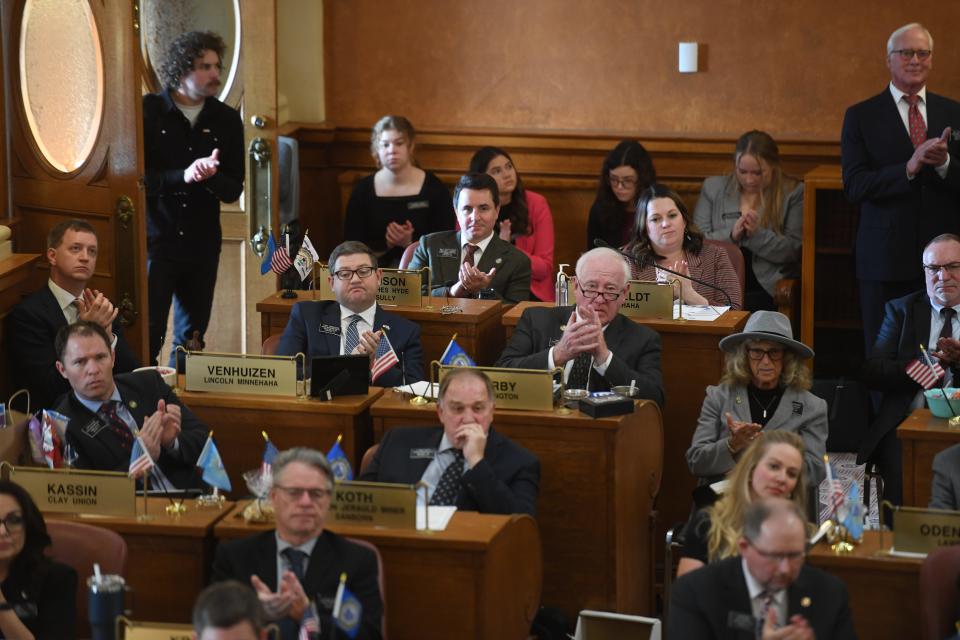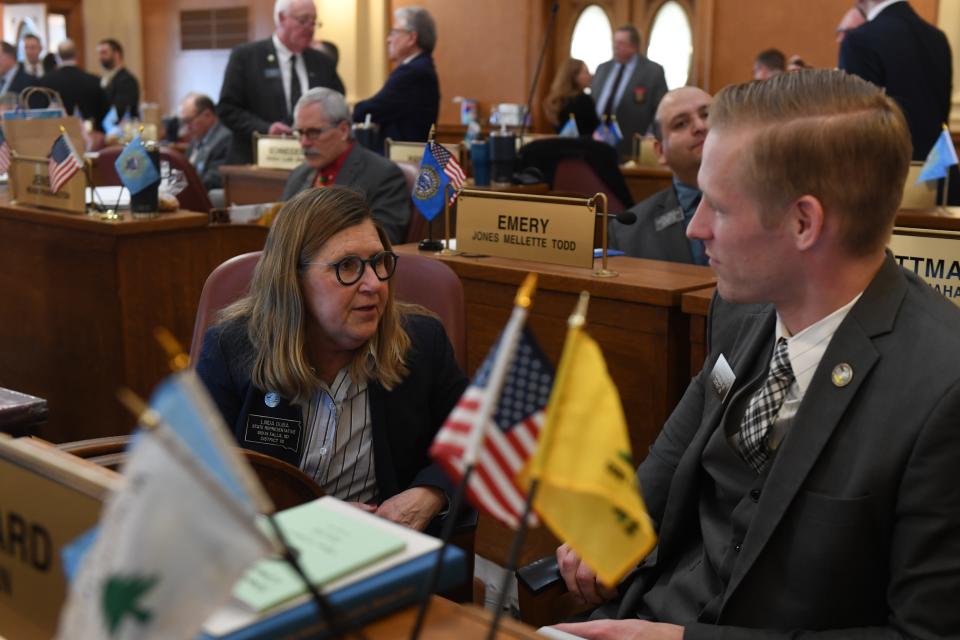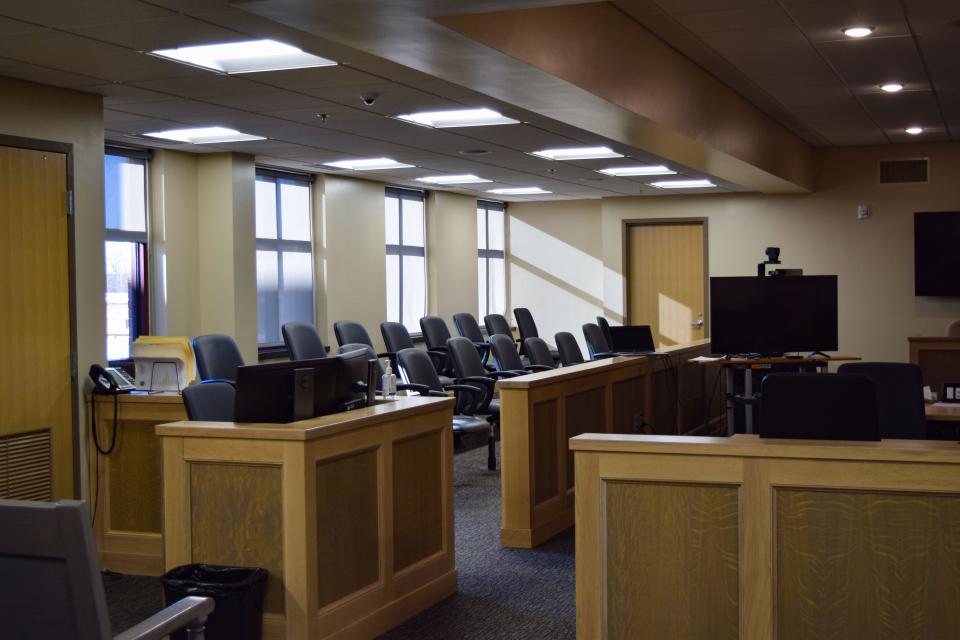Sioux Falls area to benefit from increased budgeting for the criminal justice system
PIERRE — Millions of state dollars will be spent on the criminal justice system and many of those funds target Minnehaha and Lincoln counties.
As time dwindled on the 99th Legislative session, lawmakers on the appropriations committee budgeted hundreds of thousands of dollars for two new judges and extra support staff in the Second Circuit, which oversees courts in Minnehaha and Lincoln counties. They also upped the amount counties can be reimbursed for juvenile justice diversion programs.

On top of that, the Legislature voted to put away hundreds of millions of dollars for the construction of a new men’s prison facility in Lincoln County.
All of this — the diversion programing, the judges and staff, and the prison — fit into the larger picture of the state putting more ongoing funding behind one of the largest growing metro areas in the state.
“We as a Legislature need to be thinking over the next couple of years about what do we need to be doing or reconsidering in that whole law enforcement-criminal justice area, to make sure that we're being as efficient as possible and as effective as possible” Rep. Tony Venhuizen, R-Sioux Falls, said.

Avoiding the criminal justice system at the start
Should Gov. Kristi Noem sign SB47, counties will receive a $750 per child reimbursement for juvenile diversion programs. That’s up from the $250 reimbursement currently offered.
Diversion programs operated in 24 counties across the state including Minnehaha, Pennington and Davison, according to the Unified Judicial System in 2024. Successful diversions have also risen in the last six years.
The programs are meant to keep children from going into the criminal justice system when they commit a minor crime or are truant. Diversion efforts can look like family counseling, providing school supplies, offering arts programing and more, according to Lara Roetzel, the Pennington County State’s Attorney.
More: This Davison County youth diversion program brings a new approach to juvenile justice
By finding the root cause of why that child has become justice involved, the diversion program can be tailored to the child’s needs and “give them the tools that they need to become more resilient,” Rep. Linda Duba said.
The Sioux Falls Democrat added that by expanding the diversion program reimbursements, it could entice more counties to take part in the programming.
“[This is] a no brainer from my perspective because when we can keep a juvenile out of the system, we are so much better off,” Duba said.

Children who go through diversion programs are 45% less likely to reoffend in the future, according to the Annie E. Casey Foundation.
Lawmakers like Rep. Tim Reisch, R-Howard, who was also the former Secretary of Corrections, said that diversion programs help the state save money since taxpayers more than likely won’t be paying for that child’s incarceration when they become an adult.
“The farther you go into the criminal justice system, the worse” the outcome, Reisch said.
Supporting the Second Circuit court
At the beginning of the new year, Noem and state Supreme Court Chief Justice Steven Jensen requested the Legislature find the money to fund one judge and one deputy clerk in the Second Circuit because of the increasing caseload.
Starting in 2000, there were eight judges in the Second Circuit. By 2020, four more judges had been added to the circuit court, according to UJS.
Within that same time period, Sioux Falls had grown more than 60% in population while Lincoln County’s population increased 170%, according to the U.S. Census Information.

Case filings have only risen in the Second Circuit as the population grew. There were 2,267 cases in the 2013 fiscal year. By FY 2023, that number had doubled to 4,441.
As a response, Venhuizen and Duba were able to find room in the state’s budget to fund for new two judges and three deputy clerks in the Second Circuit, but also a staff attorney.
More: Lack of diverse interpreters creates delays in due process for some Minnehaha County defendants
“The court system doesn't have any control over their workload,” Venhuizen said, noting that the funds are an ongoing expense. “They just take whatever cases come in the door and so we really need to make sure that they're staffed appropriately.”
Ultimately, the Legislature will appropriate $722,000 to fund the new Second Circuit court staff. Overall, the UJS will have a total budget of $75.6 million.
Prison funding is a ‘trust fund’
On Feb. 29, House members voted 58-11 to transfer almost $236 million to the incarceration construction fund as a way to start saving for the new 1,500 bed men’s prison expected to be built in Lincoln County.
The new prison will replace the century old state penitentiary in Sioux Falls, but the final construction cost for the new men’s prison isn’t expected until November. At the moment, the rough construction cost estimate is $567 million.
More: Funding construction of new men's prison in Lincoln County heads to House, Senate floors
The transfer was compared to putting money in a savings account or a trust fund. It also ensures that the fund accrues interest so that if the costs of constructing the prison rise, the state is prepared. The fund also helps the state avoid bonding for the prison.
“I think we all can agree you always want to end up with money left over, not short,” Venhuizen told lawmakers on Feb. 29, explaining that they would return in a year to vote on authorizing the construction spending. “The more money we put in this fund now, the more likely it is that we're not short when we have to do this in a year.”

Those opposed such as Rep. John Mills, R-Volga, and Rep. Kevin Jensen, R-Canton, said that the state had received an estimate for the new prison construction cost almost four years ago, which amounted to $330 million, and they worried about the increasing construction costs.
“It's easy to spend the money,” Mills said. “If you go out to build a house, you start by telling the builder how many dollars you have to spend. We need to set a limit.”
More: Lincoln County men's prison cost estimates could total over $567M before ground is broken
Not only is the state picking up the tab for the creation of the new prison, it will also take some of the financial burden off of the five counties that already house prisons. Currently, counties are on the hook for paying the costs incurred when a prisoner commits a crime while inside prison.
HB1039 alleviates that burden and places $250,000 for inmate defense into the Department of Corrections' budget. Additionally if an inmate has money in their account after the defense costs are calculated, they could also be required to pay the money back.
This article originally appeared on Sioux Falls Argus Leader: New judges, support staff coming for Second Circuit Court

